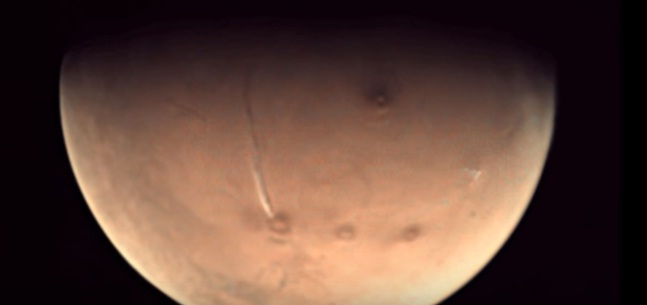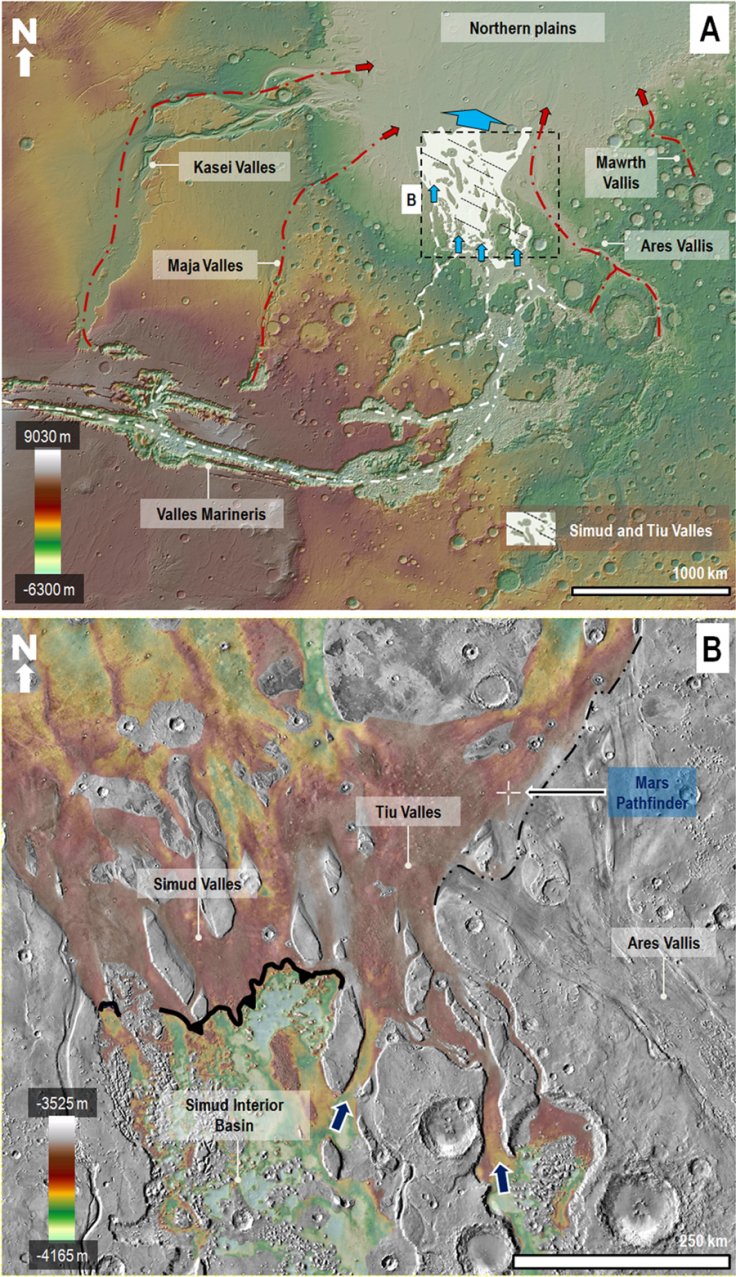
Pathfinder, NASA's first rover mission to Mars might have explored the edges of a Martian sea in 1997, a new study has revealed. Scientists also believe that images taken by the probe could yield evidence of the habitability in the Red Planet.
This new evidence of running water on the Martian surface has made many believe that alien life had once thrived on the Red Planet. The study report of this new research is now available in Journal Nature Scientific Reports.
NASA launched the Pathfinder mission in 1997 to test the Martian mega-flood hypothesis. The mission was carried out by spending more than $280 million. The Martian terrain within the Rover's visual range includes potential fluvial features that suggested strong evidence of extensive flooding. In the meantime, several alternative theories suggested that debris or lavas flows could have in fact dominated the channels' formational history without water discharge.

In their new paper, scientists said a basin separates most of the Martian channels from the Pathfinder landing sites show above.
"Our paper shows a basin, with roughly the surface area of California, that separates most of the gigantic Martian channels from the Pathfinder landing site. Debris or lava flows would have filled the basin before reaching the Pathfinder landing site. The very existence of the basin requires cataclysmic floods as the channels' primary formational mechanism. The basin is covered by sedimentary deposits with a distribution that precisely matches the inferred extent of inundation from potential catastrophic floods, which would have formed an inland sea," said Alexis Rodriguez, lead author of the study, Phys.org reports.
Rodriguez also added that this sea is approximately 250 kilometers upstream from the Pathfinder landing site. The researcher made it clear that the simulations they created during the study indicate the presence of the sea that would have attenuated cataclysmic floods.
A few weeks back, popular extraterrestrial researcher Scott C Waring had claimed to have discovered fossilized structures on the Red Planet. After making this discovery, Waring assured that aliens had once lived on Mars, and he urged United States President Donald Trump to make him the head of NASA, to further the study.









